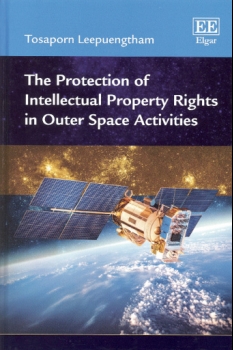With interest in asteroid mining on the increase and bases designed to acquire lunar water resources in the offing, a book on the legal aspects of property is timely. The subject of who owns the Moon and other celestial bodies has been under discussion, by space lawyers at least, since the signing of the Outer Space Treaty in 1967; the typical answer has always been ‘no-one owns outer space’ because it is part of the ‘heritage of mankind’.
This view has evolved in recent years, because the space law treaties are increasingly understood to apply to states as opposed to individuals; of course, it was once only states and their agencies which explored space, but that paradigm is shifting towards private industry.
This is clearly a legal text - as indicated by its formal style, voluminous footnotes and total lack of illustrations – but it provides a good introduction to the issues of Intellectual Property (IP) property in space. After a section on principles and definitions, it covers IP rights, patents, the application of copyright law and aspects of private international law in relation to space activities. The volume concludes with a substantial bibliography and index.
As is often the case with discussions of space law, the broaching of a subject generates more questions than answers. Indeed, the final chapter features four key questions and explains the extent to which they are answered by the preceding chapters. The author concludes with a nod towards future challenges. Most scholarly discussions of IP rights in space relate to patent and copyright protection, he says, but ‘a whole new space tourism industry’ will generate ‘trademark issues relating to souvenirs and advertising in space, which scholars will be required to address’. So, plenty more legal discussions and textbooks to come.
Mark Williamson











